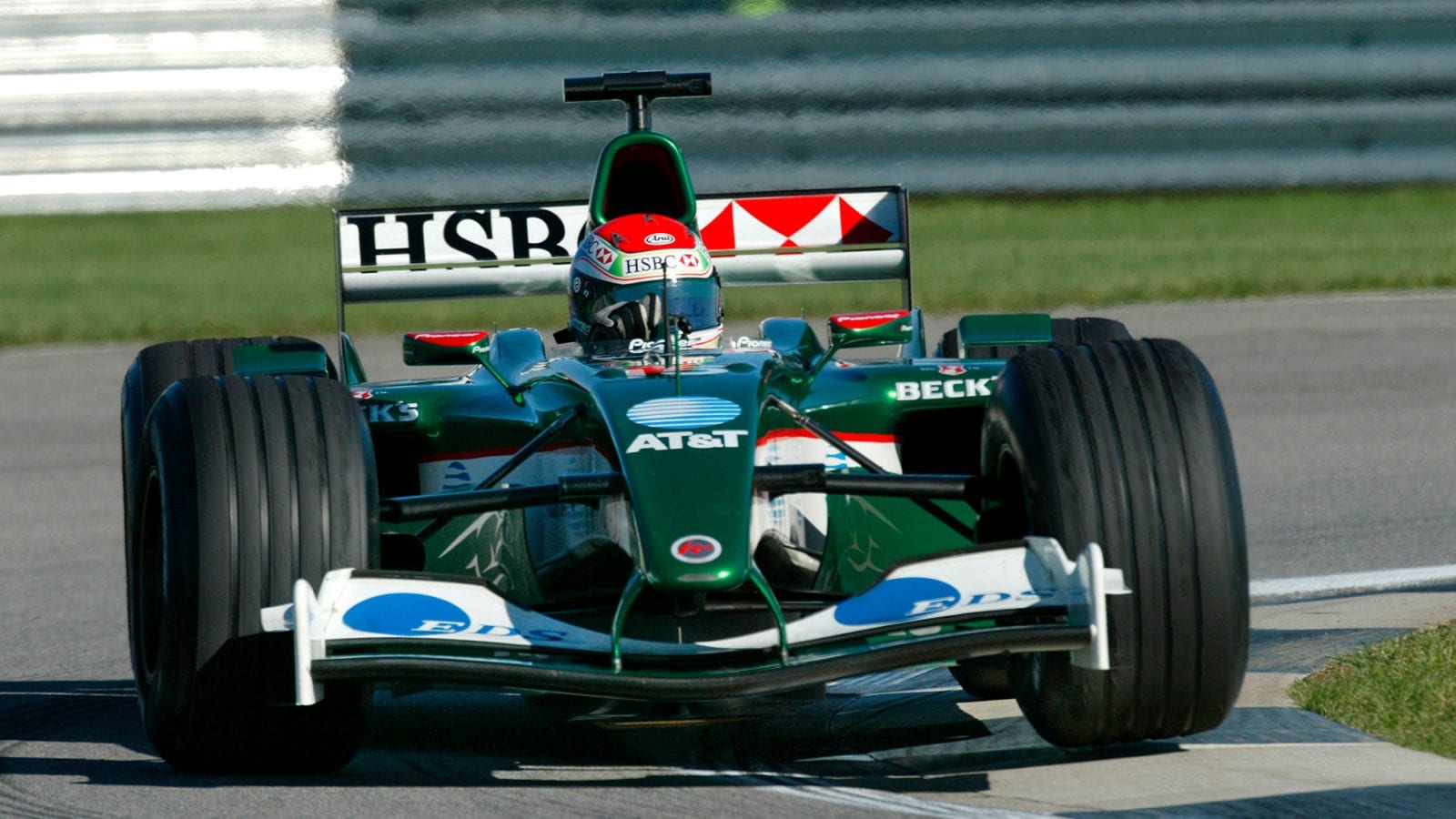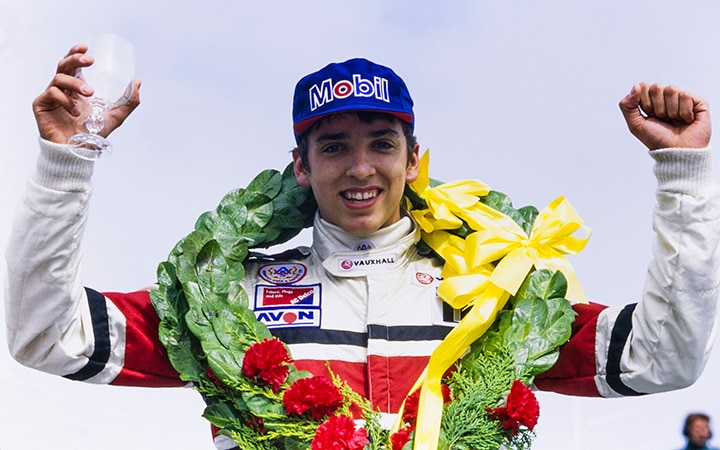Montagny and Wilson finished second and fourth in the series, behind F1 refugee Ricardo Zonta, but during the summer there was a chance the Englishman might head in the other direction. Minardi needed a stand-in, after Alex Yoong was rested for two Grands Prix, but Wilson didn’t fit the cockpit and the drive went instead to jockey-sized Anthony Davidson.
❖
Minardi owner Paul Stoddart had faith in Wilson, though, and for 2003 insisted his cars should accommodate somebody of taller stature. Money remained an obstacle, but Palmer – Wilson’s manager since that FPA success – hit upon the idea of a share issue and Justin Wilson plc was launched.
That raised enough to fund a Minardi seat and early-season performances were impressive. He and team-mate Jos Verstappen invariably qualified at the back, but Wilson’s consistently brisk starts and instinctive eye for first-lap gaps allowed him to put the Minardi in places it had no right being. And he frequently kept it there, until pit strategies breached his defence. By July Jaguar had swooped to sign him as replacement for the axed Antonio Pizzonia, as team-mate to former sparring partner Webber, and that’s when his F1 career lost impetus.
“I feel I could have done a better job if I’d had more seat time,” he says, “but I joined Jaguar in the middle of a test ban. I did about 10 laps on Silverstone’s South Circuit, to make sure the seat fitted, then headed off to race in the German GP at Hockenheim.
“It’s frustrating that I didn’t do more in F1, but I guess it just wasn’t meant to be”
“The first couple of times I drove the car, everything felt very natural… but then it suddenly became pitch-sensitive. I couldn’t turn and brake simultaneously at all and was never able to get the car properly balanced for corner entries. And then, when I was asked to test at the season’s end, everything felt normal again. I never did get to the bottom of that. I don’t know what I was doing wrong. Perhaps I just forgot how to drive for a few months…”
In the background, meanwhile, Red Bull had for several months been poised with a wad of cash to place F3 graduate Christian Klien in a Jaguar for 2004. Wilson left with a single point to his name and jetted off to the States. “It’s frustrating that I didn’t do more in F1,” he says, “but I guess it just wasn’t meant to be.”
❖
He landed a CART seat with Conquest Racing in 2004, then switched to RuSport and took a first series victory at Toronto the following year. He was a consistent front-runner, but this was the time of Newman-Haas-Lanigan dominance, with Sébastien Bourdais, and Wilson emerged as runner-up to the Frenchman in both 2006 and 2007. Then Bourdais switched to F1 with Toro Rosso and NHL signed Wilson… just as America’s warring single-seater factions unified. He qualified on pole for the last-ever CART race, at Long Beach in 2008, but retired with engine failure and spent the rest of the campaign adjusting to Indycars and ovals. A late-season victory on the streets of Detroit was the only real highlight and, with NHL entering a period of financial decline, Wilson had to seek a new home.


